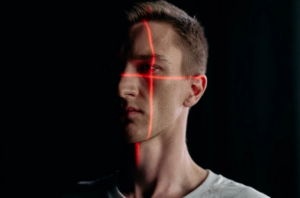As technology can’t and won’t stop evolving, so does the need for secure and reliable authentication methods. Biometric authentication is one such method that has gained popularity in recent years. It’s also explained in the article “How Surveillance Is Used In Security.” Basically, it involves using the unique physical features of a person as a means of identification or verification.
From voice recognition to fingerprint scanning, there are several types of biometric authentication available today. In this blog post, we’ll highlight the four most common types of biometric authentication along with their pros.
Voice Recognition
Voice recognition is a biometric authentication method that rose to first place in the world due to its high convenience and ease of use. It involves using an individual’s unique voice patterns as a means of identification or verification.
One major advantage of voice recognition is that it can be used remotely, making it ideal for situations where physical presence is not even a possibility. This makes it particularly useful for business settings like call centers and smart speakers like Amazon Alexa, Apple Siri, or Google Nest. The best part is it needs no physical touch at all.
Iris Recognition
 Aside from your voice, your eye features can also work as a subject for biometric authentication, especially your iris, to verify your identity. The iris is the most unique part of the eye, which has distinct patterns that are different for every individual, making it an ideal identification method.
Aside from your voice, your eye features can also work as a subject for biometric authentication, especially your iris, to verify your identity. The iris is the most unique part of the eye, which has distinct patterns that are different for every individual, making it an ideal identification method.
This technology works by taking a high-resolution image of the iris using specialized cameras. The software then analyzes this image and compares it with existing records to determine if there is a match. Its level of accuracy is through the roof. The probability of two identical irises is extremely low, making it nearly impossible for someone else to impersonate you.
Fingerprint Scanning
Another popular form of biometric authentication, you guess it, is fingerprint scanning. You may even read this post using a smartphone that has this feature. It involves capturing an individual’s unique fingerprint pattern and comparing it to a pre-existing database for verification purposes.
In addition, fingerprint scanning offers high-security levels as compared to traditional password protection systems since passwords can be easily hacked or forgotten, while fingerprints cannot be lost forever unless some event, like an accident causing physical damage.

Facial Recognition
But when it comes to the easiest form of biometric authentication tech for the user, nothing’s compared to facial recognition. This tech works by analyzing various points on an individual’s face, such as the distance between the eyes, nose, and mouth. These points are then measured and compared with data stored in a database to determine if there is a match.
Due to its convenience, it makes a great feature for unlocking smartphones or accessing secure areas without requiring additional hardware like fingerprint scanners or iris readers. However, some worry that this technology could be used for surveillance without individuals’ consent or knowledge.
So are they a good set of tech? Certainly it is. Biometric authentication is a highly effective way of ensuring security and privacy in today’s digital age. With the rise of cybercrime, this set of tech has become increasingly important to protect sensitive information from unauthorized access. Biometrics offers an extra layer of protection that traditional password-based systems cannot match.


















+ There are no comments
Add yours